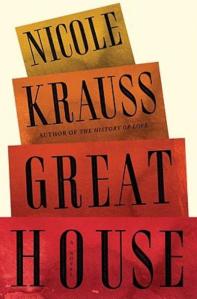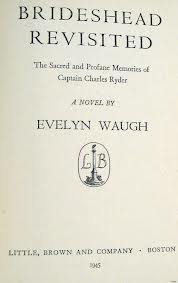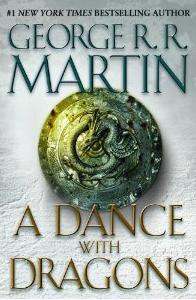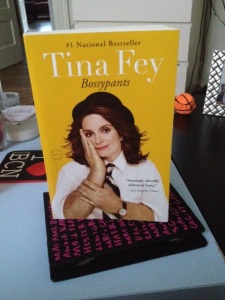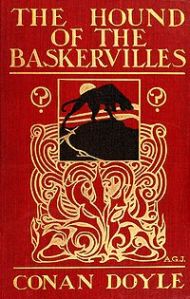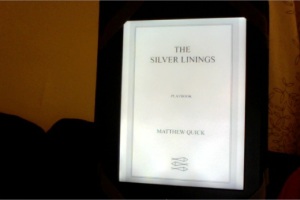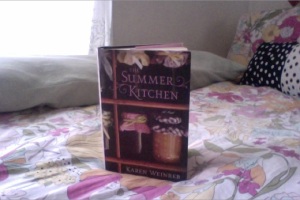Tags
Anansi Boys, Interred With Their Bones, Jennifer Lee Carrell, Kate Morton, Neil Gaiman, The House at Riverton
I’ve had a hectic couple of weeks. I moved out of my college apartment and somehow got all my junk back into my parents’ house, where I’m living during my job search. I still made time for reading (of course) but I didn’t have much time for blogging. I have three books to catch you guys up on, so without further ado:
 Anansi Boys is the first book by Neil Gaiman that I’ve ever read. I had high expectations, since several people have told me that they think I’d enjoy his books. My sister and I read this for Book Club: Party of Two and we shared a lot of the same reactions to it. Premise first, though.
Anansi Boys is the first book by Neil Gaiman that I’ve ever read. I had high expectations, since several people have told me that they think I’d enjoy his books. My sister and I read this for Book Club: Party of Two and we shared a lot of the same reactions to it. Premise first, though.
The plot centers around a character that is dead for almost the entire novel: Anansi, or Mr. Nancy, is a charismatic, elderly gentleman that dies of a heart attack while singing karaoke. His son, Fat Charlie (who isn’t overweight but nevertheless carries that nickname around with him) travels to Florida for the funeral and makes quite a few startling discoveries about his family and his own past. First, it is revealed that his father was an incarnation of an African spider god. The reader is expected to just take that in stride, because soon after Mr. Nancy’s identity is revealed Fat Charlie finds out that he also has a twin brother, a man named Spider. Fat Charlie himself has none of his father’s powers because they were all passed down to this previously-unknown sibling. Spider is cool, handsome, and confident— everything that the shy and unassuming Fat Charlie isn’t. What Fat Charlie is, however, is seriously annoyed when Spider moves into his house and refuses to leave. He is even angrier when Spider begins impersonating him and steals his fiance. What ensues is a whirlwind of ancient curses, travels to new worlds, and near-fatal skirmishes as Fat Charlie and Spider try to figure out the nature of their relationship and stay alive.
Neither my sister nor I knew that Anansi Boys was a spinoff from a book Gaiman wrote previously called American Gods until after we’d finished it. That fact explains why both of us were confused at the beginning of the book: it just sort of charges right in with little explanation or background. I guess the reader is already supposed to be somewhat invested in the characters because of the other novel, but I wasn’t all that interested in the plot until about halfway through. Once the action of the story really got going I finished the book in a couple of hours, but it was slow going before that. I’ll read more of Gaiman’s books because I think they’re really special in terms of ideas and their concern with the idea of storytelling, but I was only lukewarm about this one. My sister felt the same.
 I reviewed a book by Kate Morton previously on Well Read, and was annoyed by how much Morton likes to borrow from her source material in terms of plot. That feeling carried over to The House at Riverton, but less so. The main character of this book is an elderly woman (she’s 98) named Grace who lives in a retirement home in England. In her youth, Grace worked as a housemaid at an estate called Riverton. A terrible accident took place while Grace was working there (a young poet shot himself), and a movie about the event is in the process being made. The director asks Grace to help with the authenticity of the project, and as a result Grace begins to reminisce and rehash the dark secret of what really happened at Riverton.
I reviewed a book by Kate Morton previously on Well Read, and was annoyed by how much Morton likes to borrow from her source material in terms of plot. That feeling carried over to The House at Riverton, but less so. The main character of this book is an elderly woman (she’s 98) named Grace who lives in a retirement home in England. In her youth, Grace worked as a housemaid at an estate called Riverton. A terrible accident took place while Grace was working there (a young poet shot himself), and a movie about the event is in the process being made. The director asks Grace to help with the authenticity of the project, and as a result Grace begins to reminisce and rehash the dark secret of what really happened at Riverton.
Though the frame story takes place in the present day, most of the novel’s actual plot takes place in the years after World War I. The daughters of the Riverton family, Emmeline and Hannah, are the main characters as well as the main players in the plot. A lot of what I’ve come to expect from Morton is present in this book: a love triangle, sordid secrets, and an opulent setting. What results is a sort of cross between The Great Gatsby and Downton Abbey. That’s what I mean about Morton borrowing a lot from her source material: many of the plot elements have definitely been done before. That doesn’t stop The House at Riverton from being an exciting read, but it does make the twists a little less surprising than they should be.
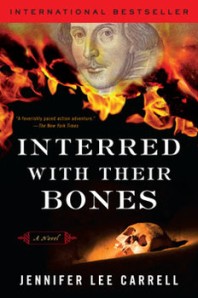 Last but not least, we have Interred with their Bones by Jennifer Lee Carrell. This novel is like a Da Vinci Code for book nerds: it deals with the potential discovery of a lost Shakespeare play. The main character is a young theater director and Shakespeare scholar named Kate Stanley. Stanley is in the middle of a production of Hamlet at the Globe Theater in London when her estranged mentor, Professor Roz Howard, shows up and insists on meeting. She claims to have made a huge discovery. However, before they can discuss it, Roz is killed in the Globe offices. The Globe is set on fire, and Stanley realizes that she has no choice but to get involved and uncover Roz’s secret. What happens next is essentially a treasure hunt: Stanley travels around the world in a race against Roz’s killer, trying to figure out exactly what her mentor wanted her to know.
Last but not least, we have Interred with their Bones by Jennifer Lee Carrell. This novel is like a Da Vinci Code for book nerds: it deals with the potential discovery of a lost Shakespeare play. The main character is a young theater director and Shakespeare scholar named Kate Stanley. Stanley is in the middle of a production of Hamlet at the Globe Theater in London when her estranged mentor, Professor Roz Howard, shows up and insists on meeting. She claims to have made a huge discovery. However, before they can discuss it, Roz is killed in the Globe offices. The Globe is set on fire, and Stanley realizes that she has no choice but to get involved and uncover Roz’s secret. What happens next is essentially a treasure hunt: Stanley travels around the world in a race against Roz’s killer, trying to figure out exactly what her mentor wanted her to know.
A lot of the plot of this book deals with the various theories about who wrote Shakespeare’s plays. It also taught me something I didn’t know about the popularity of Shakespeare’s works: they have a strong tie to the American West. As Carrell explains, during the Gold Rush and the time of the old west Shakespeare plays were as widely read and known as our popular culture is today. While I don’t necessarily buy that Shakespeare didn’t write his plays and sonnets, I was surprised that a lot of cowboys and gold diggers could quote him from memory. Aside from a couple of slow sections and a lot of historical name-dropping that confused me from time to time, this one was a winner. Apparently there’s a sequel too, so I’ll have to look into that soon.
That’s me all caught up for now! I’m about halfway through my next book already, so I won’t be gone for long this time. Since I’m unemployed right now, I have a lot of time for reading (one thing about my epic, post-grad job search I don’t mind at all).

